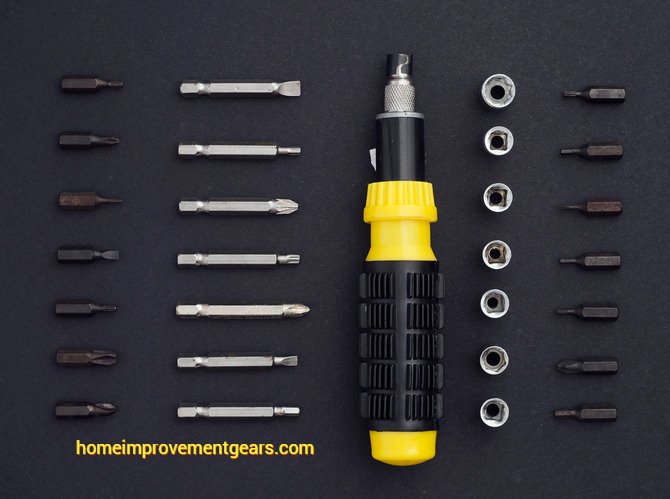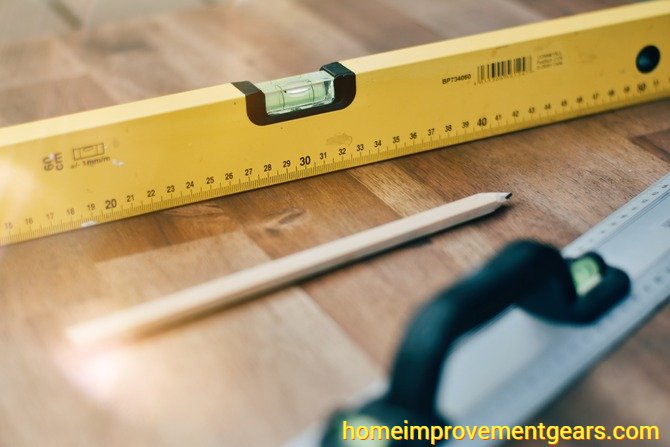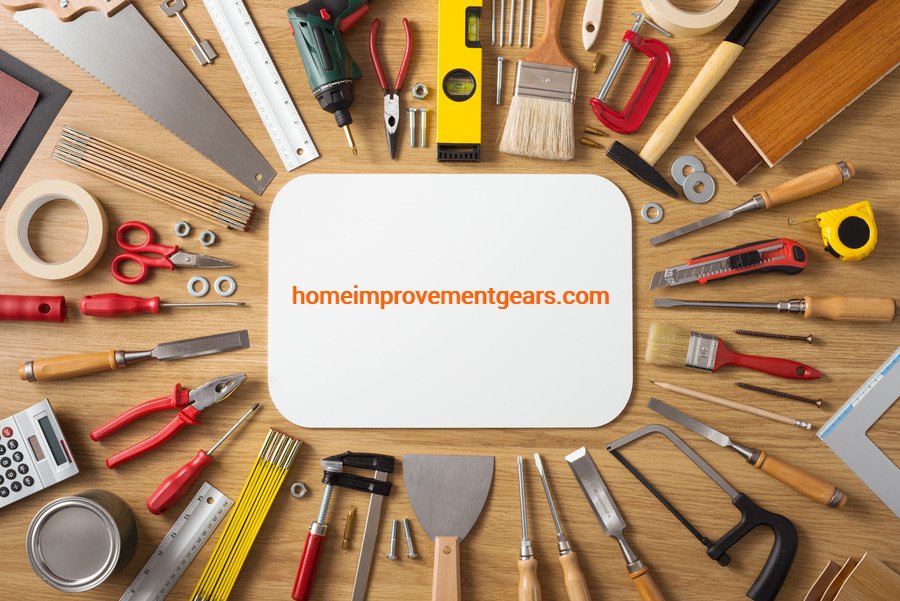
Bathroom Renovation Problems and Solutions
January 24, 2023
Product Tests
November 5, 2023Understanding Home Improvement Tool Selection
Home improvement projects can provide great satisfaction for DIYers, but the tool aisles at hardware stores can feel totally overwhelming to beginners. Rows of power drills, shelves of handsaws, walls of wrenches – how is a beginner supposed to know where to even start? It’s enough to make anyone feel lost.
The good news is you don’t need to be a power tool expert to take on most common home projects. Having a good grasp of just the essential DIY tools will go a long way. This guide will walk through the core tools every amateur home improver should have in their toolkit.
We’ll cover the basics like hammers, screwdrivers, pliers and wrenches. Don’t underestimate the importance of good tape measures and levels either – precision is key! You’ll also learn when basic handsaws are all you need versus upgrading to an electric saw for simpler cutting.
The goal is to simplify the tool buying process so that your next trip to the hardware store doesn’t seem so intimidating. With the right guidance, you’ll be able to stock up on what you really need to start tackling everything from building bookshelves to tiling bathroom floors. Equipped with the core DIY tools, you’ll gain the confidence to take on projects that make your house feel like home.
Power Tools for Home Improvement Projects – Buying Guide

You really need some power tools for your DIY projects at home. There are lots of types. They’re super handy as well. Tools such as drills, saws, sanders, and routers will make your job quicker and neater. So, when you choose your power tools, you need to know what you are doing, and what you’re working on. Also assess yourself how much you know. Here’s a quick look at some popular ones:
Cordless drills: Super handy and no cords to trip over, but they might cost a bit more. Look at how long the battery lasts and how powerful it is. Also, see what extras you get. Go for one with a long-lasting battery and good power. And pick a well-known brand that promises to fix or replace it if something goes wrong.
Circular saws: Circular saws: Perfect for cutting wood and even metal or plastic. Find one that feels good to hold, has a strong motor, and a blade that lasts. When shopping for circular saws, check how deep they cut, how much you can tilt the blade for angled cuts, and what kinds of blades fit. A saw with a laser for extra precise cuts is a plus.
Power tools are key for DIY. You’ll need drills, saws, sanders, and routers. Drills make holes or drive screws. Saws cut through materials. Sanders smooth surfaces. Routers create designs. Choose tools based on your project and skill. Learn as you go. Start with easy tasks. Move to tougher projects with experience. This approach improves your work and keeps it interesting.
Hand Tools for Home Improvement Projects – Buying Guide

Choose power tools based on your projects. Pick durable, strong, and comfy ones. Check their accessories, warranty, and maker support. The right tools make DIY easy and boost your confidence.
Hand tools are key for your DIY at home. Choose necessary tools based on your job, what you’re working on, and how much you know. Look at hammers, screwdrivers, wrenches, and pliers. They make tasks precise and controlled. This guide helps you pick the right tools.
Screwdrivers: When you buy screwdrivers, focus on screw types you’ll use. Choose a set with Phillips and flathead drivers in varied sizes. Consider handle material, grip, and durability too.
Wrenches: Wrenches have diverse sizes and styles for wide uses. When you purchase wrenches, ponder size and type needed, plus material and finish. Select wrenches with a comfortable grip and durable build.
Pliers: Pliers grip, twist, cut. When you buy pliers, think about the task like cutting or gripping. Opt for pliers with cozy grips and sturdy jaws. Consider spring-loaded or locking mechanisms too.
Quality hand tools are long-term investments, as they will last for years. Before you decide to buy home improvement tools, you’d better choose high-quality and top brands after reading customer reviews. Durable and comfortable tools will make your home improvement projects easier and more fun.
Measuring and Layout Tools

When diving into home improvement, the right tools for measuring and layout are your best friends. You’ve got a whole menu of tools like tape measures, levels, squares, and protractors which are ready to make any job precise and spot-on. Think about what you’re planning to do, the stuff you’ll be working with, and how much you already know. Let’s check it out.
Tape measures: These are your go-to for checking how long or wide something is. Hunt for one that feels solid, with numbers you can read at a glance and a snap-back that doesn’t fight you. You’ll want one that stretches far enough for your needs, won’t fall apart if you look at it funny, and locks without a fuss. Bonus points if it talks both metric and imperial, because who knows when you’ll need to switch?
Levels: Got a shelf that looks like it’s doing the limbo? Grab a level. The trick is finding one long enough for your grand designs, with a bubble you can spot from across the room and accuracy that won’t leave you second-guessing. And it better not crumble after one drop.
Squares: When you need an edge to be just right, reach for a square. Durability and precision are key, with marks you can actually see. And if you’re the type who likes a tool that can multitask, a combination square might be your new best friend—it’s a ruler, a guide, and a protractor all in one.
Before you whip out your wallet, do a little homework on which brands stand the test of time and what other DIYers say. Splurging on quality now means less headache and more bragging rights down the line.
Safety Equipment – Buying Guide
Safety gear matters a lot in home improvement projects. It comes in different kinds. Good high-quality safety gear keeps you safe and protected while working on your projects. Below is a list of important safety equipment that you need.
Hard hats: A hard hat protects your head from falling debris and other hazards. It is important for any building work and home improvement project. Choose one that fits safety rules in your country or region.
Gloves: Gloves keep your hands safe from cuts, scrapes, and other injuries. Pick a comfy pair that provides a good fit.
Safety glasses: Safety glasses shield your eyes from debris that flies around and other hazards. Get ones that meet safety rules.
Earplugs: Earplugs are important for loud work. They protect your ears from hearing damage caused by loud machinery and power tools.
Respirator: A respirator is needed for working with bad stuff like asbestos and lead paint. It keeps your lungs safe.
Also think about boots, knee pads, and bright clothes for extra safety, in addition to basic safety equipment.
When you buy safety equipment, pick reputable trusted brands. Make sure they follow safety rules. They should fit well and be comfy. Good gear means safer work while working on your home improvement projects.
Home Improvement Lighting Equipment Buying Guide
Types of Lighting: Lights serve all kinds of purposes. Some give a room an overall glow. Others let you see your book or cook your meal. And some highlight the beautiful details, like a work of art.
Bulb Types: Old-school bulbs are incandescent. They’re cheap but guzzle electricity. LEDs (light-emitting-diode) cost more upfront but will save you money and last longer. CFLs (compact fluorescent lamps) are energy-savers too but have mercury, so dispose of them carefully.
Features to Consider: Look at how adjustable, colorful, efficient, and true-to-life lights are. Dimmer switches let you set the perfect brightness. Color temperature runs from cozy warm to bright cool. Check out lumens per watt for efficiency. And color rendering shows the real, vibrant hues.
Buying Guide: Pick lighting to match the room and what you’ll do there. Bedrooms could use a soft, inviting glow. Kitchens need bright light to prep food safely. Reading nooks beg for focused light that won’t strain your eyes. Go warm and dim for relaxation. Cool and bright for tasks. And high-color rendering to appreciate true colors.
Home Improvement Plumbing Equipment Buying Guide
Faucets: Faucets come in all styles. Single-handle faucets let you control temperature and flow with one lever. Double-handle gives you separate control over each. Touchless faucets turn on with sensors – no germs!
Toilets: Toilets also vary. One-piece toilets have a seamless look with a tank and bowl together. The pieces have separate tanks and bowls. Dual-flush lets you choose between liquid and solid flushes to save water.
Showerheads: Showerheads make a difference too. Handheld showerheads attach to a hose for targeted spraying. Rain showerheads provide wide coverage for a drenching effect. Massage showerheads pulse water for a spa-like experience.
Buying Guide: When choosing, think about who’s using it and the room’s decor. Look for water-saving models to conserve. Match the style to your bathroom. Get touchless or specialized spray options if you want those perks. Pick faucets, toilets, and showerheads that suit your home and habits.
Home Improvement Flooring Equipment Buying Guide
Types of Flooring: Floors come in so many options these days. Hardwood is natural wood in tons of species and finishes. Laminate has a wood photo under a protective layer. Tile comes in ceramic, porcelain, stone, and more. Carpet has fibers like nylon, polyester, and wool. Vinyl is synthetic in endless patterns and colors.
Installation: Installation varies too. Glue-down sticks solid hardwood, laminate, and vinyl right to the subfloor. Floating lays engineered hardwood, laminate, and vinyl over underlayment. Nail-down hammers solid hardwood directly into the subfloor.
Features to Consider: Consider durability, wear resistance, maintenance, and waterproofing. Hardwood is durable but needs regular care and gets scratched. Laminate is budget-friendly and easy to maintain but not as durable. Tile resists water and is easy to clean but can be cold underfoot. The carpet is warm and cozy but tough to clean. Vinyl resists water but isn’t as durable as tile.
Buying Guide: Pick flooring that suits the room’s use. Choose durable tile or hardwood for high-traffic areas. Consider cozy carpets or vinyl for bedrooms. Match the style to your home. Factor in required maintenance. Get flooring that fits your lifestyle and home
Home Improvement Paint and Wall Covering Equipment Buying Guide
Types of Paint: Oil-based paint consists of oil mixed with resin. It makes a tough and long-lasting finish; however, it needs more time to dry and comes with a strong smell. On the contrary, latex paint is a blend of water and artificial resin. It’s simple to wash up and dries fast; however, it doesn’t last as long as oil-based paint.
Types of Wall Coverings: You can find wallpaper in many designs and textures; removing it can be tricky, though. Paintable wallpaper, which you can paint, has a textured finish; vinyl wallpaper is simple to clean and lasts well, but it doesn’t allow air as well as others. Fabric options offer different patterns and textures; they tend to cost more compared to others.
Features to Consider: When picking paints or wall coverings, consider their sturdiness, how well they hold up, cleaning ease, and water resistance. Oil paint outlasts latex but needs more upkeep and gives off a potent scent. Wallpaper comes with lots of design choices but isn’t easy to take down. Vinyl wallpaper is tough and a breeze to clean yet lacks breathability. On the pricier side are fabric wall coverings.
Buying Guide: Reflect on the placement of paint or wall coverings—areas with lots of foot traffic like living rooms or corridors might need something tougher like oil paint or vinyl wallpaper. Spaces where comfort is key, such as bedrooms or family rooms, may be better off with latex paint or fabric wall coverings. Match your pick to the look of your house. Think about how much upkeep you’re ready to handle and the product’s longevity.
Outdoor Living Buying Guide
Outdoor Furniture: Wood furniture comes in many finishes and styles. It lasts long, but you must take care of it often. Metal furniture also has various styles and finishes; it’s sturdy with hardly any upkeep. Wicker furniture, built from woven stuff, has lots of styles, is easy to move, and doesn’t need much work to maintain.
Outdoor Decor: Outdoor rugs spice up your space with different styles and fabrics. They bring in color and texture. Cushions and pillows for the outdoors, with many styles and materials, make your outdoor seats comfier and more stylish. Outdoor lights create a cozy atmosphere and are practical too.
Features to Consider: When picking things for outdoors, it’s smart to think about how long they’ll last, if they can handle the weather, how easy they are to keep up, and their look. Wood items are tough but need you to keep up with them. Metal ones are just as tough with less fuss. Wicker is easy but might not hold up as well as metal.
Outdoor rugs, cushions and pillows come in loads of styles and materials. They bring life and feel to your outside area. Outdoor lighting sets the mood and is useful.
Buying Guide: Take a look at the size and shape of your outdoor area, and pick stuff that looks good in it. Think about your local weather, and pick things that won’t give in to it. Decide on your outdoor area’s style, and get things that will go well with it. Finally, consider how much time you want to spend taking care of these things, and choose maintenance-friendly options provided that it’s what you prefer.
Appliances Buying Guide
Types of Appliances: Gas appliances run on natural gas and electric appliances use electricity.
Features to Consider: Think about energy efficiency, size, what the appliance can do, and how much it costs when picking out an appliance. Appliances that conserve energy could lower your bills, although they might cost more to start with. Make sure the appliance’s size is right for the space you have at home. Features like self-cleaning ovens, WiFi connections, and extra burners might be handy but can bump up the price.
Buying Guide: First, look at what your family needs and pick appliances that fit those needs. If you’re someone who cooks a lot a gas stove could be better than an electric one. Consider how big your kitchen or laundry area is so the new appliance doesn’t cramp the space. Focus on features you’ll actually use and select an appliance that has them. Do some price comparisons and check out reviews before you buy to make sure you’re getting your money’s worth.
Kitchen and Bath Buying Guide
Types of Kitchen and Bath Fixtures: Chrome fixtures shine brightly and are a cinch to keep clean, but your wallet might feel the pinch. In contrast, brushed nickel fixtures boast a less flashy matte look and won’t cost you as much as chrome. Then you have oil-rubbed bronze fixtures, flaunting a deep and luxe finish, again more affordable than their chrome counterparts.
Features to Consider: When it’s time to pick out kitchen and bath fixtures, keep these key points in mind: how long they’ll last if they can stand up to regular use, the effort you’ll need to keep them looking good, and whether they suit your taste. Chrome fixtures are tough cookies that clean up nicely but might stretch your budget. Brushed nickel fixtures offer a more subtle touch for less money, and oil-rubbed bronze fixtures deliver a stately look without breaking the bank.
Buying Guide: Look at your home’s design and find fixtures that go well with it. Think about how much upkeep you can handle, and select ones that fit your willingness to maintain them. Reflect on what your family requires, and pick items that will fulfill those requirements. Do some price checking and look at product feedback to make sure you’re spending wisely.
Heating and Cooling Buying Guide
Types of Heating and Cooling Systems: Heating and cooling keep your home comfy. Forced-air systems use a furnace to heat and a central air conditioner to cool. Boiler systems use water or steam to heat, and air conditioners or heat pumps to cool.
Features to Consider: Look at energy efficiency, size, features, and price when you choose heating and cooling systems. Energy-efficient systems cost more upfront but save on your energy bills. Make sure the size is right for your home, and choose a system that will properly heat and cool it. Added features like zoned heating and cooling, programmable thermostats, and air purification systems are useful but drive up the price.
Buying Guide: Consider the needs of your household, and choose a system that will meet those needs. Boilers excel in cold areas versus forced air. Get the right size system for your square footage. Decide which features matter, like smart thermostats. Compare prices and reviews before choosing. Have an HVAC technician inspect and recommend the best fit for your home and budget.
For any home improvement project – lighting, plumbing, flooring, appliances, paint and wall coverings, kitchen and bath, heating and cooling, and more – think about your family’s needs, style, and budget. With so many options, do your research to find the perfect fit. Our wide selection makes it easy to discover the right tools and materials right here!

